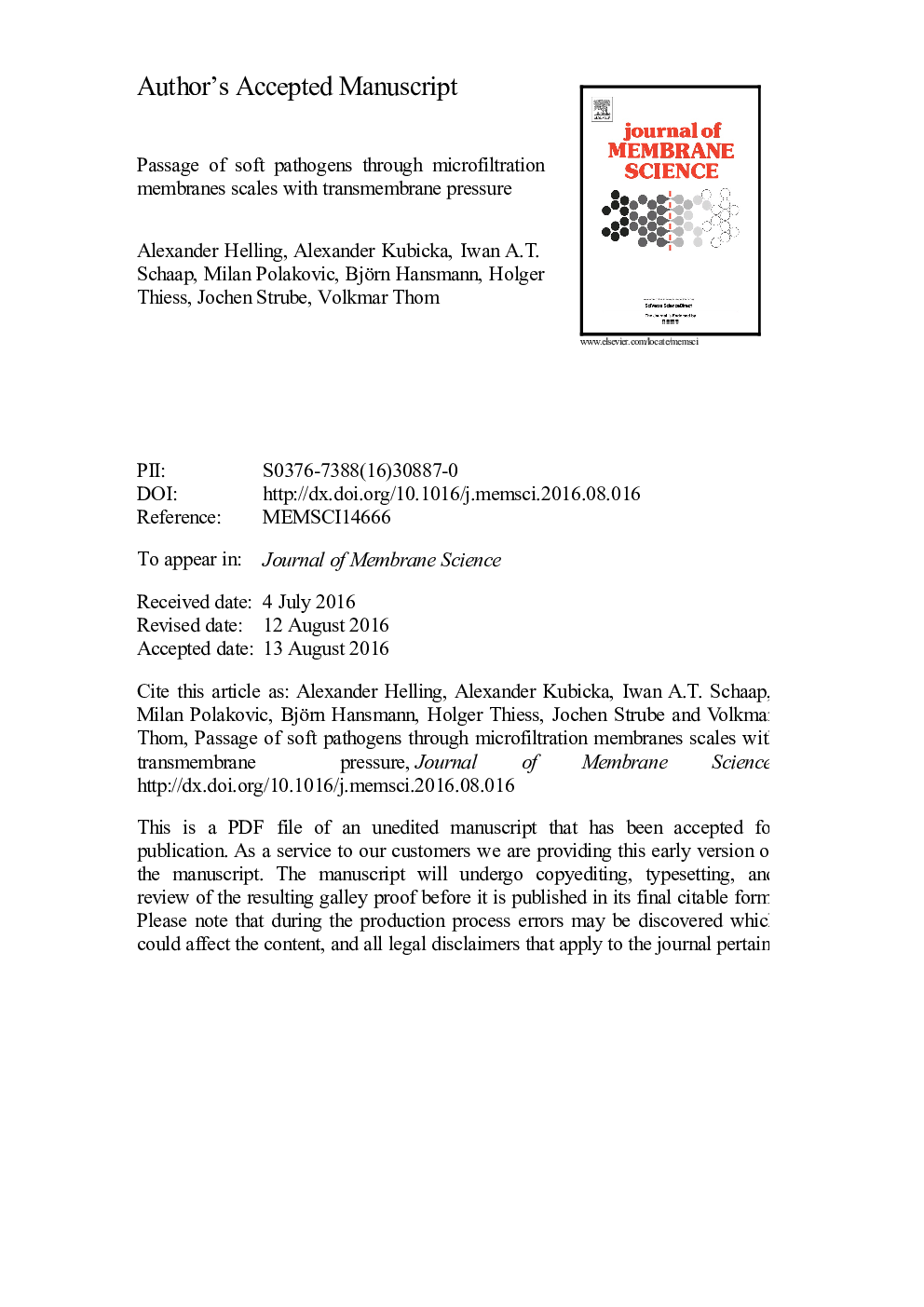| Article ID | Journal | Published Year | Pages | File Type |
|---|---|---|---|---|
| 4989373 | Journal of Membrane Science | 2017 | 24 Pages |
Abstract
This experimental study elucidates the impact of transmembrane pressure and particle deformability on the retention of biological and non-biological particles by porous microfiltration polymer membranes in dead-end filtration processes. Bacteriophages, mycoplasma, common bacteria and polystyrene model particles, ranging from 0.02 µm to 1.5 µm in particle diameter, were chosen due to their industrial relevance as well as due to their expected differences in deformability. For each particle type, precipitation cast polyethersulfone membranes with a sponge-like structure were tailor-made in order to achieve two levels of retention for the respective particle type. The transmembrane pressure was varied from 10 to 950 kPa and the stiffness of the particles was measured with atomic force microscopy. A good correlation between particle stiffness on the one hand and the impact of transmembrane pressure on particle retention on the other hand was observed. The present study suggests that mycoplasma and Gram-negative bacteria are easily deformable at low forces, which explains that they are thus able to squeeze through membrane pores when transmembrane pressure is increased. In contrast, for the relatively stiff Gram-positive bacteria, much higher transmembrane pressures were needed to show a retention decrease. Bacteriophages and polystyrene beads did not show higher passage at the exerted transmembrane pressures.
Keywords
PESTSBATCCLRVTMPPSDNIPSASTMPVPNonsolvent-induced phase separationDLSAFMDeformationBacteriaDeformabilityParticle size distributionAmerican society for testing and materialstrypticase soy brothPhagesTransmembrane pressureMycoplasmaAmerican Type Culture CollectionYoung’s modulusatomic force microscopyMicrofiltrationSoftnessRetentionDynamic Light Scatteringpolyethersulfonepolyvinylpyrrolidone
Related Topics
Physical Sciences and Engineering
Chemical Engineering
Filtration and Separation
Authors
Alexander Helling, Alexander Kubicka, Iwan A.T. Schaap, Milan Polakovic, Björn Hansmann, Holger Thiess, Jochen Strube, Volkmar Thom,
